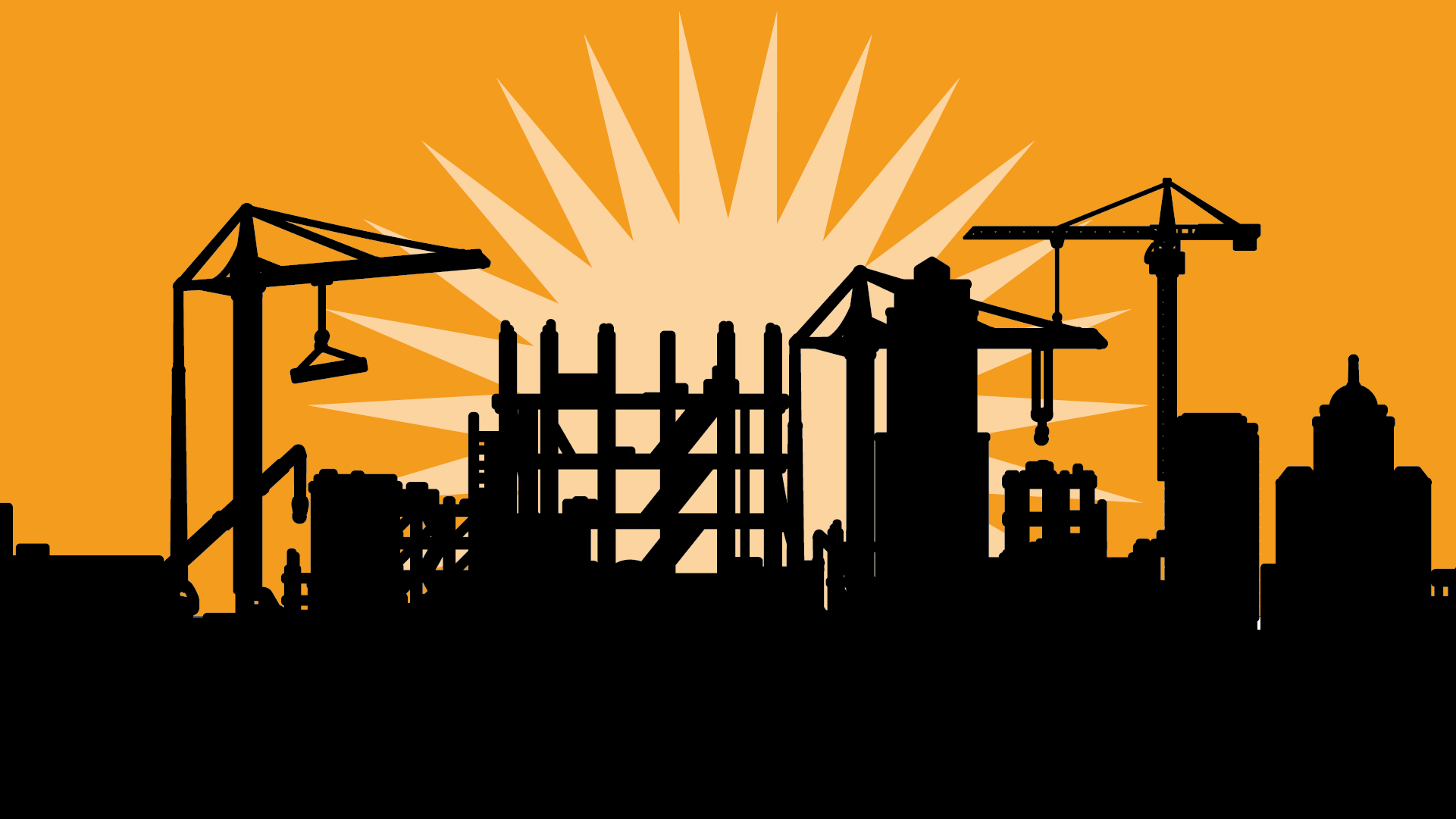
Toolbox Talks
Toolbox Talks safety briefings are an easy and efficient way to keep construction employees safe.
What are Toolbox Talks?
These brief meetings offer an opportunity for team members to learn about potential hazards and preventive measures, as well as a chance for the employer to review safety regulations. They are a great way to ensure that everyone is aware of the safety protocols that must be adhered to in order to prevent accidents and injuries on the job site.
Each toolbox talk has been reviewed and approved by a subject matter expert at L&I DOSH.
NEW! Search Toolbox Talks
Type a search term in the search box below to view English toolbox talks that match your search query. Or, use the category dropdown to view related talks.
Funding and support for the Toolbox Talks project and mobile apps has been provided by the State of Washington, Department of Labor & Industries, Safety & Health Investment Project.
Quality Drinking Water
Date Posted: 08/31/2016
Drinking water on construction sites should be obtained and handled with care to prevent contamination. Improper storage, distribution, or dispensing can lead to a number of communicable diseases.
Rainwater Collection and Storage
Date Posted: 08/31/2016
Rainwater Collection & Storage can be used instead of potable (drinking) water for things like irrigation or flushing toilets.
Raised Flooring
Date Posted: 08/30/2016
Raised Flooring Systems allow ventilation, plumbing, and/or high and low voltage systems to be installed under the floor. Under-floor air distribution has been found to be more energy efficient because less fan power is required to distribute air at the floor than in overhead in the conventional ceiling systems. As a result, there is less overhead work on a ladder but more trip and fall hazards.
Rebar Safety
Date Posted: 08/29/2016
Rebar is used on almost every job site. All protruding rebar is hazardous. Employees can fall on protruding rebar, creating major and even life-threatening injuries.
Recycled Concrete
Date Posted: 08/29/2016
Concrete is often used for non-structural fill, road base aggregate, or for specific landscaping projects. In some cases it is more cost effective to recycle a concrete building by crushing it onsite and use the crushed material for the new project. The use of recycled concrete significantly reduces unnecessary material being sent to the landfill.
Respirators
Date Posted: 08/29/2016
We want to protect your body and lungs. When all other engineering and work place practice controls are exhausted, then respirators will be worn when the employee is exposed to harmful dusts, fumes, gases, mists, vapors, and sprays that are above the permitted exposure limits.
Rigging Safety Practices
Date Posted: 08/29/2016
Over the years workers in the construction industry have been seriously injured or killed while working with or near rigging operations. Employees whose work activities include rigging must be trained in the recognition and avoidance of unsafe conditions.
Safe Cell Phone Usage
Date Posted: 08/28/2016
The use of a cell phone and other similar hand held devices can allow employees to be more available, no matter their physical location. Multi-tasking while using a hand held device is tempting and can prove deadly when combined with operating motorized vehicles and on the job sites. Cell phones and other hand held devices must be used safely. The National Safety Council estimates that 1.6 million crashes are caused by drivers using cell phones and texting each year.
Safe Work Habits
Date Posted: 08/28/2016
In most everything we do, we find a way to make the process go easier and faster. These processes we develop become work habits and are used not only at work but in our everyday activities.
Safety Awareness
Date Posted: 08/28/2016
Safety Awareness is like almost everything else we do, learned and not instinctive. We aren't born with awareness for safety concerns. . . in fact anyone who has a young child or grandchild knows this as they see them going around doing unsafe things constantly.
Scaffold Safety
Date Posted: 08/27/2016
Every year nearly 100 fatalities and 10,000 injuries occur on scaffolding across the country, despite numerous safety regulations aimed to prevent such incidents. There are a number of different scaffold types, having different rules and regulations surrounding their assembly, fall prevention requirements, and inspection procedures.
SDS New Standard
Date Posted: 08/27/2016
The Globally Harmonized System (GHS) of Classification and Labeling of Chemicals has already been incorporated into federal OSHA's Hazard Communication Standard and adopted identically in Washington State. Material Safety Data Sheets (MSDSs) are starting to be phased out and replaced by newly required Safety Data Sheets (SDSs). Although content details on labels and SDSs are affected by the GHS, many of the current requirements are not changing. For example, requirements to distribute SDSs, label workplace containers, and train employees will remain the same.
Sexual Harassment
Date Posted: 08/27/2016
Do you have nude pictures in your workplace? Tell dirty jokes? Make suggestive remarks to other employees? If you answered yes to any of these questions you may be guilty of sexual harassment. Since enactment of the Civil Rights Act of 1964, and the development of guidelines by the Equal Employment Opportunity Commission (EEOC) in 1980, sexual harassment is considered to be a form of sex discrimination-a Federal offense.
Shading Devices
Date Posted: 08/26/2016
Exterior Shading Devices are being installed on green building projects to prevent heat, from the suns rays, from entering the building. Exterior shading devices allow daylight to enter a space while keeping direct sunlight and heat out, using nature to reduce cooling and lighting demands. Depending on their location, shading devices create an additional obstruction and/or obstacle for completing the construction and maintenance of a building.
Sharps and Needle Stick
Date Posted: 08/25/2016
It is possible that you will find a used hypodermic syringe or needle on a job-site. If you accidentally prick your skin, you could become infected with a serious or deadly disease. The best way to avoid infection is to avoid contact with the needle. Needle sticks greatly increase in densely populated areas.
Silica Exposure
Date Posted: 08/24/2016
Silica is found in many materials common on construction sites, including sand, concrete, rock, mortar, and brick. When workers cut, grind, abrasive blast, jackhammer or perform other tasks that disturb these materials, dust containing crystalline silica can released into the air. Workers who inhale this dust are at risk. Silica can cause serious, sometimes fatal illnesses including a lung disease called silicosis, lung cancer, and chronic obstructive pulmonary disease (COPD).
Site Sanitation
Date Posted: 08/23/2016
Poor site sanitation creates problems. These problems can include contaminated potable water and supplies, spread of germs, unpleasant odors, and uninvited wildlife.
Solar Hot Water Panels
Date Posted: 08/20/2016
Solar Hot Water Panels use the energy from the sun to heat water through flat glass covered panels or evacuated tubing systems which consist of two glass tubes fused at the top and bottom. The space between the two tubes is evacuated to form a vacuum. A copper pipe running through the center of the tube meets a common manifold that is connected to a hot water storage tank.
Solar Panels
Date Posted: 08/19/2016
Solar panels or Photovoltaics convert solar energy (sunlight, including ultra violet radiation) directly into electricity. If the sun is out, they are generating electricity, their dark surfaces make them hot to the touch and the wind can turn them into a sail when working on a roof.
Download the FREE
Toolbox Talks App!
Discover, discuss, and document over 150 Toolbox Talks! The Toolbox Talks app makes it simple to find safety talks for both construction and marine industries in English, Spanish, and Russian. Find a talk to review, then document your safety briefing with a signature capture form that generates a PDF of the meeting details that you can email or save to your device.
Funding and support for the Toolbox Talks project and mobile apps has been provided by the State of Washington, Department of Labor & Industries, Safety & Health Investment Project.


























